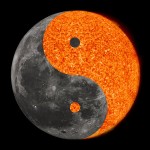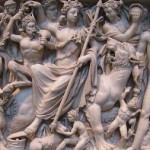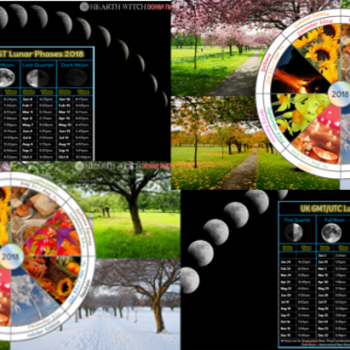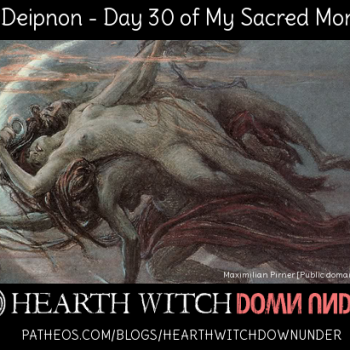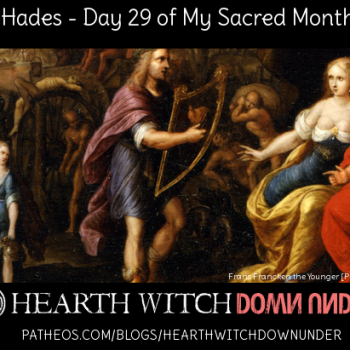Observation
If you read the Moon part 2 of this series then you will know we have been here before. Observation is the key. The questions we looked at for the full moons are relevant here – but I must point out, for the actual seasons, the weather and the Earth itself are the primary concern and animals and harvest times are somewhat secondary. It all matters of course, but climate, weather patterns are what the seasons are – animal behaviour and plant changes are causes of the change in seasons, or indicators of upcoming changes.
So climate and weather to find your seasons. Animals and plants to help predict and take advantage of the seasons – not every year is the same, so if you suddenly see an animal acting contrary to its normal behaviour at a certain time of year, you may be able to see its behaviour is indicative of a season starting early and you can make preparations for that.
- Rainfall. Not just when it rains most often, but what type of rain it is – light, heavy, sun-showers?
- Flooding, how full the rivers, lakes, ponds etc are. How fast rivers flow.
- Thunder and lightning storms. Dry ones and wet ones, when are they most frequent? Are the dry storms more likely in June, but wet thunder storms more likely in October? Or other months.
- Wind. Strength, frequency, cold or hot, direction.
- Tornadoes, hurricanes etc.
- Leaves, changing colour, falling off, growing back etc.
- Cold and hot, warm or cool.
- Frost, what time does the frost happen? morning, evening, other?
- Snow, of course. And snow melt.
- Mist and fog.
- Clouds. Clouds by themselves may not seem to determine season, but if you want to look at light and dark, then heavy grey dark clouds all the time would point to a “dark season”.
- Dry weather, cracked ground, dying grass, empty rivers, lakes and ponds.
- Plants, when do more plants grow when? When do more plants look barren? When do more flowers bloom?
- Birds, when do birds migrate, mate, nest, eggs hatch etc.
- Animals, when do animals hibernate, hide, disappear, mate, give birth, scavenge for human food etc? When do he certain insects appear more often? Remember not all animals are one, so amphibians and insects will often have a different mating season than mammals will. Some animals are more likely to be seen in the cold or wet instead of the dry and heat.
It is important to remember that the seasons do not, generally, have only one determining factor, but are made up of several things – and sometimes single things will repeat. So it is that you may have a season that is full of heavy rain, dark clouds, wet thunder storms and cold days. But you may also have a season that has even more frequent rain, but it is a light rain, usually sun-showers. You may have another season with frequent thunder storms, but very little rain. You may have a season of frequent wet thunder storms, but by morning it is so hot the mud dries and cracks.
That is three seasons that include rain, two seasons that include storms, at least two with sunny and maybe warm weather, and maybe two with heavy clouds. That’s just four seasons, so similar yet so different.

Why is it Better than the Common Seasons?
And now we reach the big question, why does it matter? Is it really better than the usual four seasons? Well, firstly, it is always a good idea to connect with your local area, just because – but also if you are an earthy sort of Pagan, then it’s very important to connect to your area. But also – if you have another look at the Gariwerd calendar you may notice one or two interesting things that are completely relevant and important to Pagans. Our winter is June through to the end of August, September begins spring. Yet, the Gariwerd calendar shows us that birds begin to nest in July and August, which is winter! This is relevant because it means that this period of time could be good for anyone wanting to do any fertility work.
Can you leave it and just continue working with the four seasons? Certainly. There is nothing wrong with using the common four seasons, it doesn’t hurt at all. They do say, if it isn’t broken, don’t fix it. However, finding the true patterns of your area may strengthen your practice and work. So while the four seasons may work perfectly well right now, it is possible you could make your seasonal work even better.
In the end it is entirely up to you, what you want and what you can do. Not everyone has time to do all the work required of observing, recording observations, researching their areas history and lore and other areas as well, and then figuring it all out. And it does take years to do, not every year is the same. As I pointed out in the Moon part 2, 2015 in my area had the most unusual spring – not just according to spring, but the months themselves. August was regularly warm and sunny, and that is usually one of our coldest months! And of course, the fact we do have climate change problems at the moment also will not help you much.
This is a big project, it is up to you if you think it will be worth the effort. But if you do decide it is worth looking into, I think you will find your practice changed for the better.
Sources and Further Reading
Indigenous Weather Knowledge
Noongar Seasons
Indigenous Aussie Seasonal Wheels
Wiki Indigenous Seasons
Ritu Seasons of India
Wiki Seasons
Book of Eucalypt
The Chaos Witch
Images Sources
Summer Woods: By Scott Wylie from UK [CC BY 2.0 (http://creativecommons.org/licenses/by/2.0)], via Wikimedia Commons.
Golden Summer Australia: Arthur Streeton [Public domain or Public domain], via Wikimedia Commons
All 180 Degrees of Separation Posts
Intro Post
The Moon part 1
The Moon part 2
Wheel of the Year part 1
Wheel of the Year part 2
Wheel of the Year part 3
Cardinal Elements

